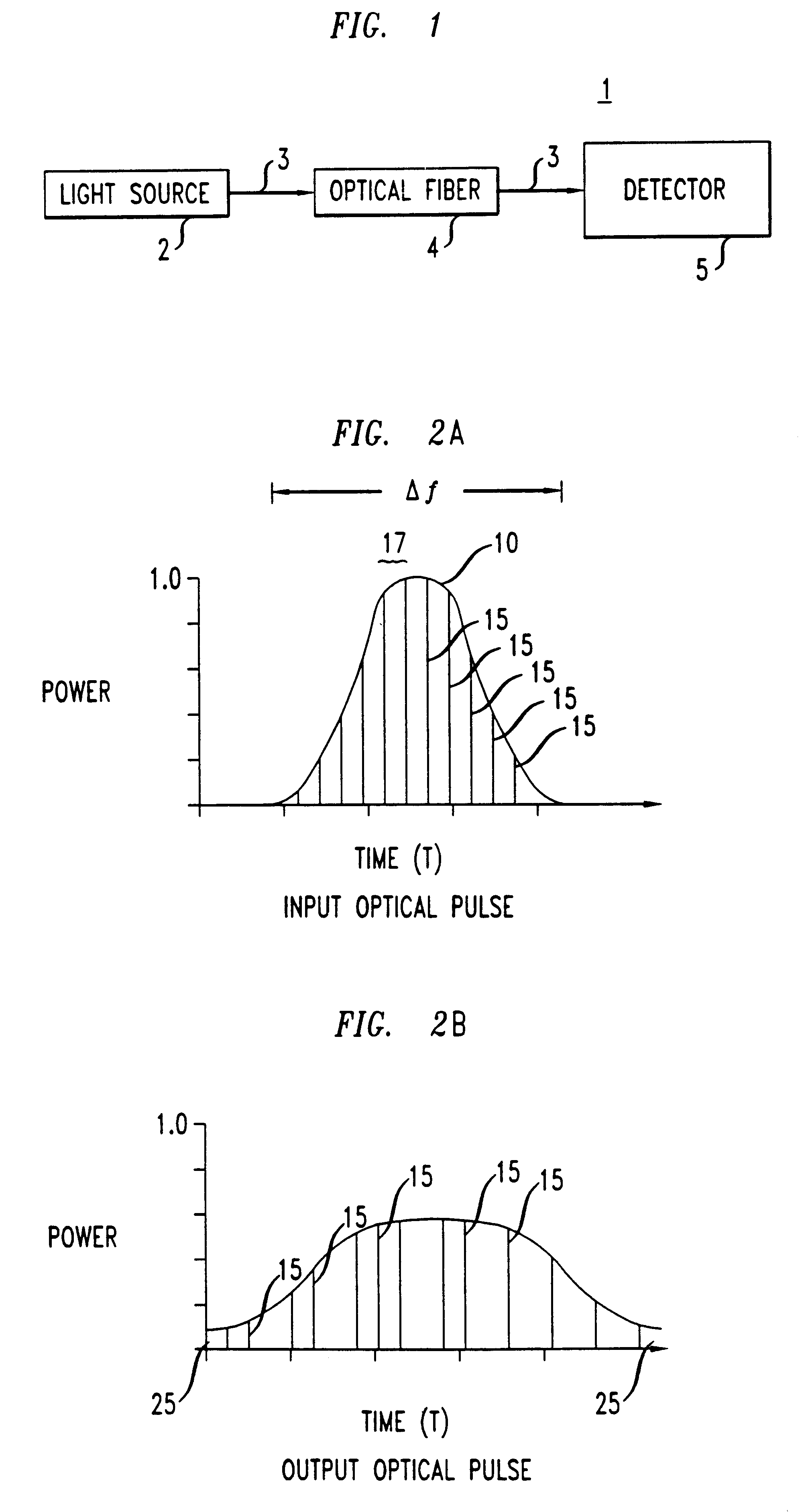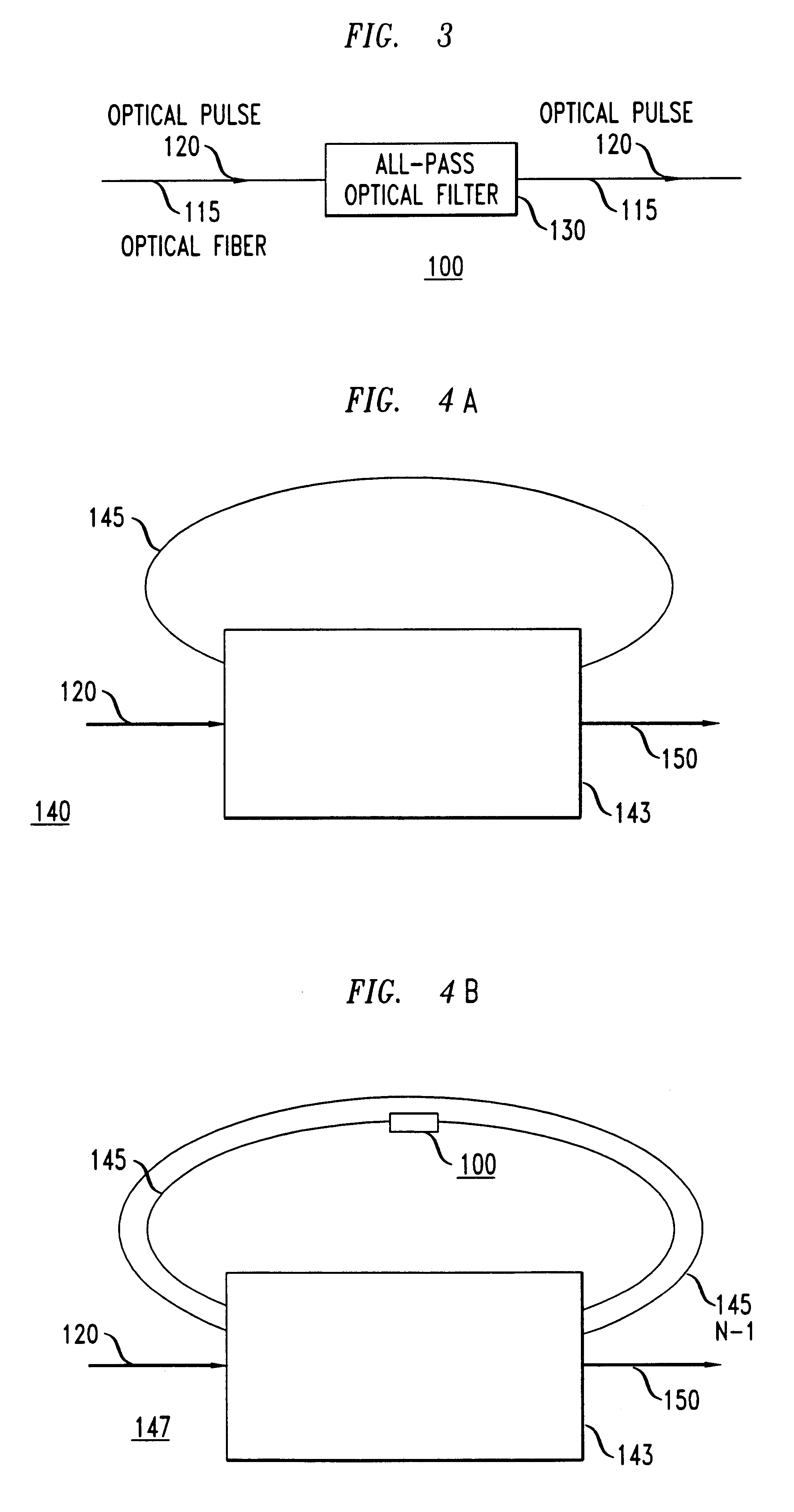All-pass optical filters
- Summary
- Abstract
- Description
- Claims
- Application Information
AI Technical Summary
Problems solved by technology
Method used
Image
Examples
example 2
All-pass optical filters are also usefull for delaying an optical pulse in time. A 4.sup.th order all-pass filter is chosen to approximate a delay time of 16 au (arbitrary units) over the normalized frequency range of 0.4 to 0.6. The filter parameters for a cascade structure using either rings (.kappa.,.phi.) or cavities (.rho.,.phi.+.pi.+.angle..rho.) are shown in TABLE 2.
The time delay for an all-pass optical filter with the parameters described above is shown in FIG. 11. The group delay applied to frequencies within the passband is essentially constant and much larger than the group delay applied to frequencies outside the passband.
example 3
An all-pass filter described below compensates for the dispersion slope of an optical fiber. The all-pass optical filter is designed to compensate the dispersion slope of 250 km of fiber over a 40 nm range. The difference in dispersion at 1525 nm and 1565 nm is designed to be 800 ps / nm, with the longest wavelength having the most negative dispersion. The FSR is chosen to be an integer multiple of the system channel spacing. For this example a value of 25 GHz is selected. The bandwidth over which the dispersion approximates a constant value is about 5 GHz. The all-pass optical filter parameters (phase, partial reflectors or couplers) are optimized at several wavelengths over the 40 nm range for the specific dispersion required at each wavelength. A set of filter parameters (one for each wavelength) are determined. The parameters are shown in TABLE 3 for a cavity structure. The phase values, .phi., of the all-pass optical filter were constrained to be constant to simplify fabrication ...
PUM
 Login to View More
Login to View More Abstract
Description
Claims
Application Information
 Login to View More
Login to View More - R&D
- Intellectual Property
- Life Sciences
- Materials
- Tech Scout
- Unparalleled Data Quality
- Higher Quality Content
- 60% Fewer Hallucinations
Browse by: Latest US Patents, China's latest patents, Technical Efficacy Thesaurus, Application Domain, Technology Topic, Popular Technical Reports.
© 2025 PatSnap. All rights reserved.Legal|Privacy policy|Modern Slavery Act Transparency Statement|Sitemap|About US| Contact US: help@patsnap.com



